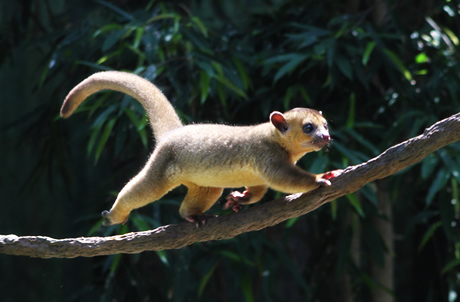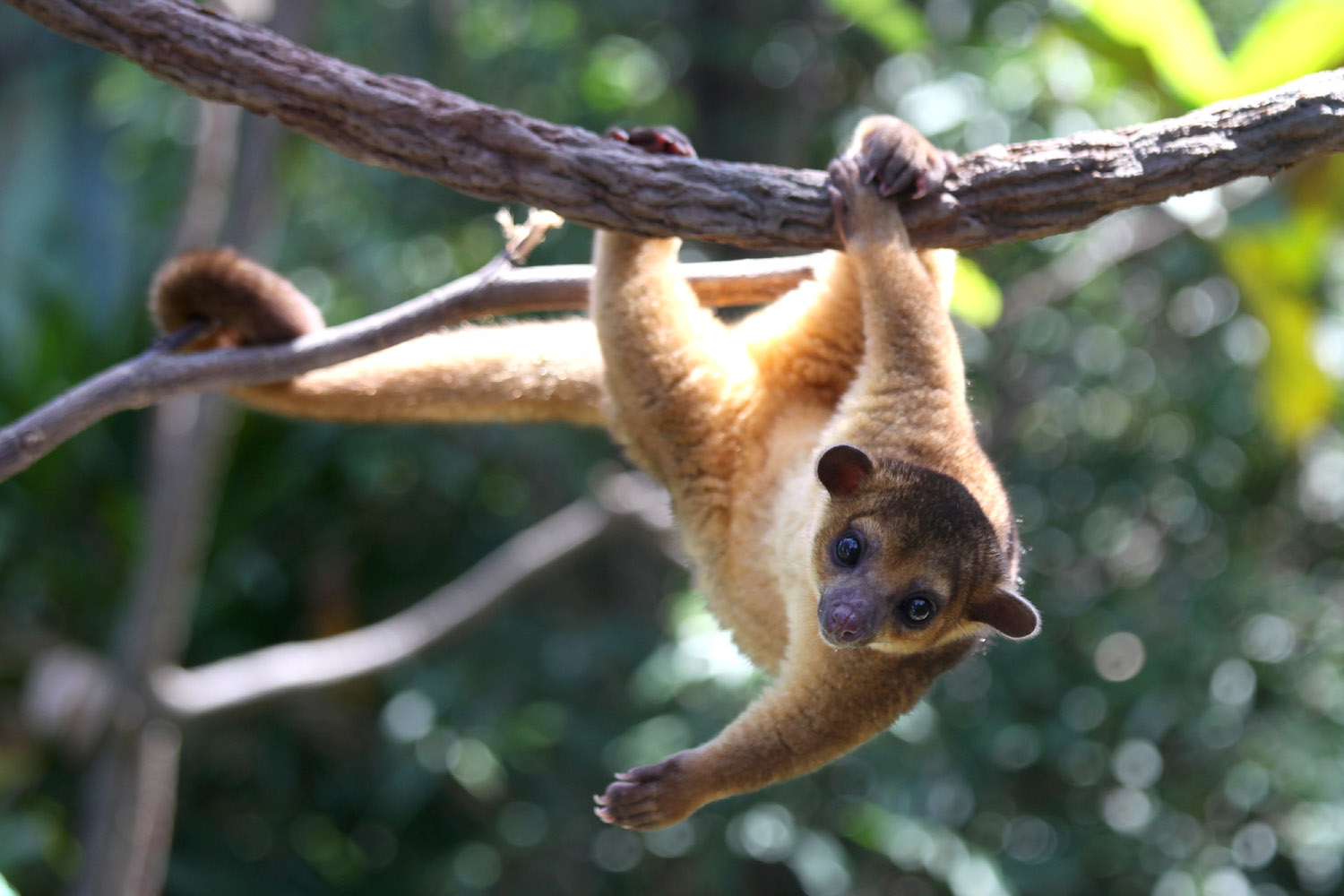Join our hands to conserve nature!
Potos flavus
Head and body: 45-76 cm
Tail: 39-57 cm
2.0-4.6 kg
Forests in Central America and northern part of South America, including Honduras, Colombia and Brazil.

Potos flavus
Head and body: 45-76 cm
Tail: 39-57 cm
2.0-4.6 kg



Human disturbance and habitat destruction are driving kinkajous away from home. Deforestation has shrunk their range and reduced their population. Kinkajous are also captured for the pet trade as well as hunted for their meat and pelt. Kinkajous feed on fruit and nectar, and hence play an important role in the forest ecosystem as pollinators and seed dispersers. If they decline, plants may be affected, which in turn threaten kinkajous.